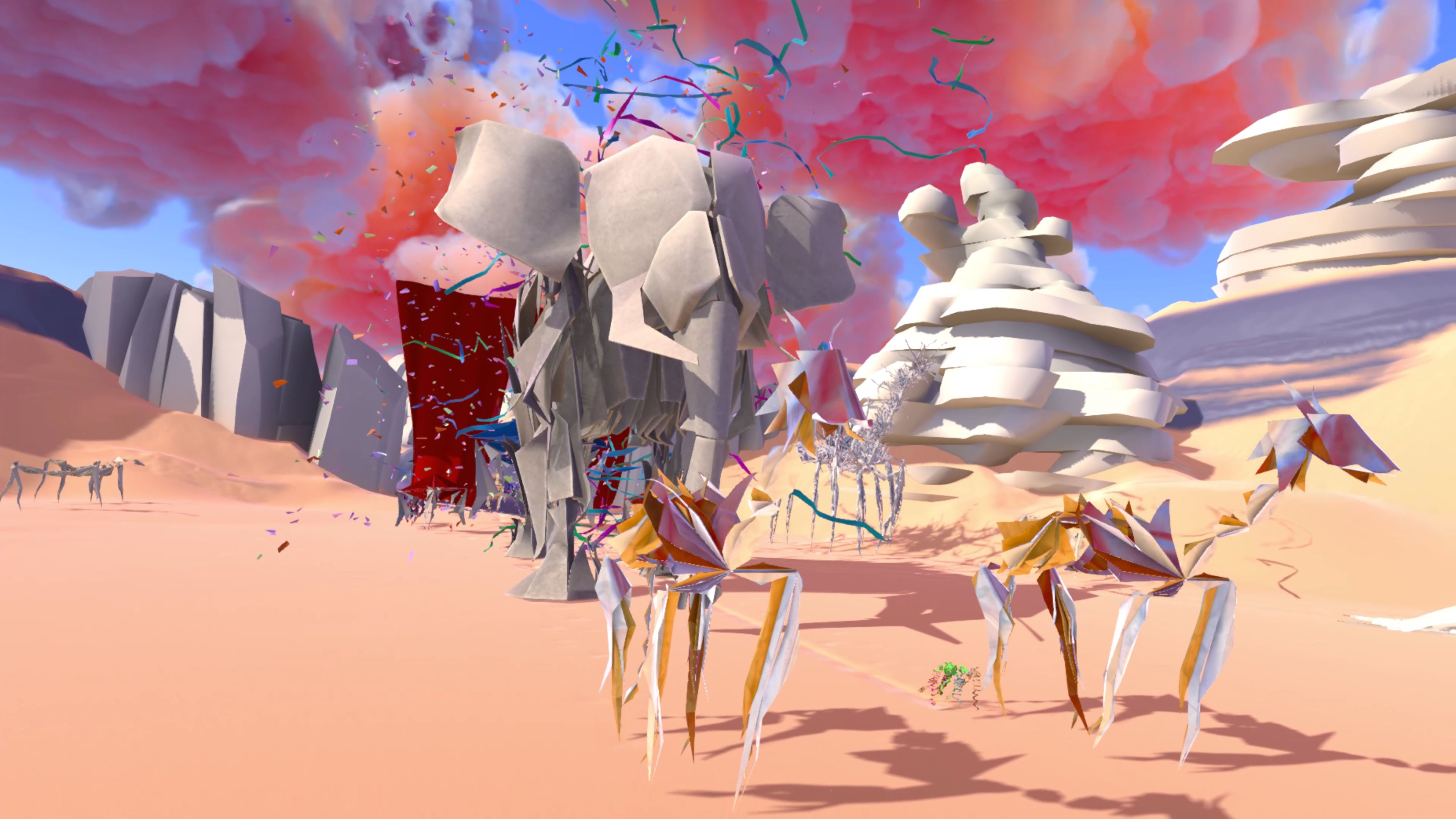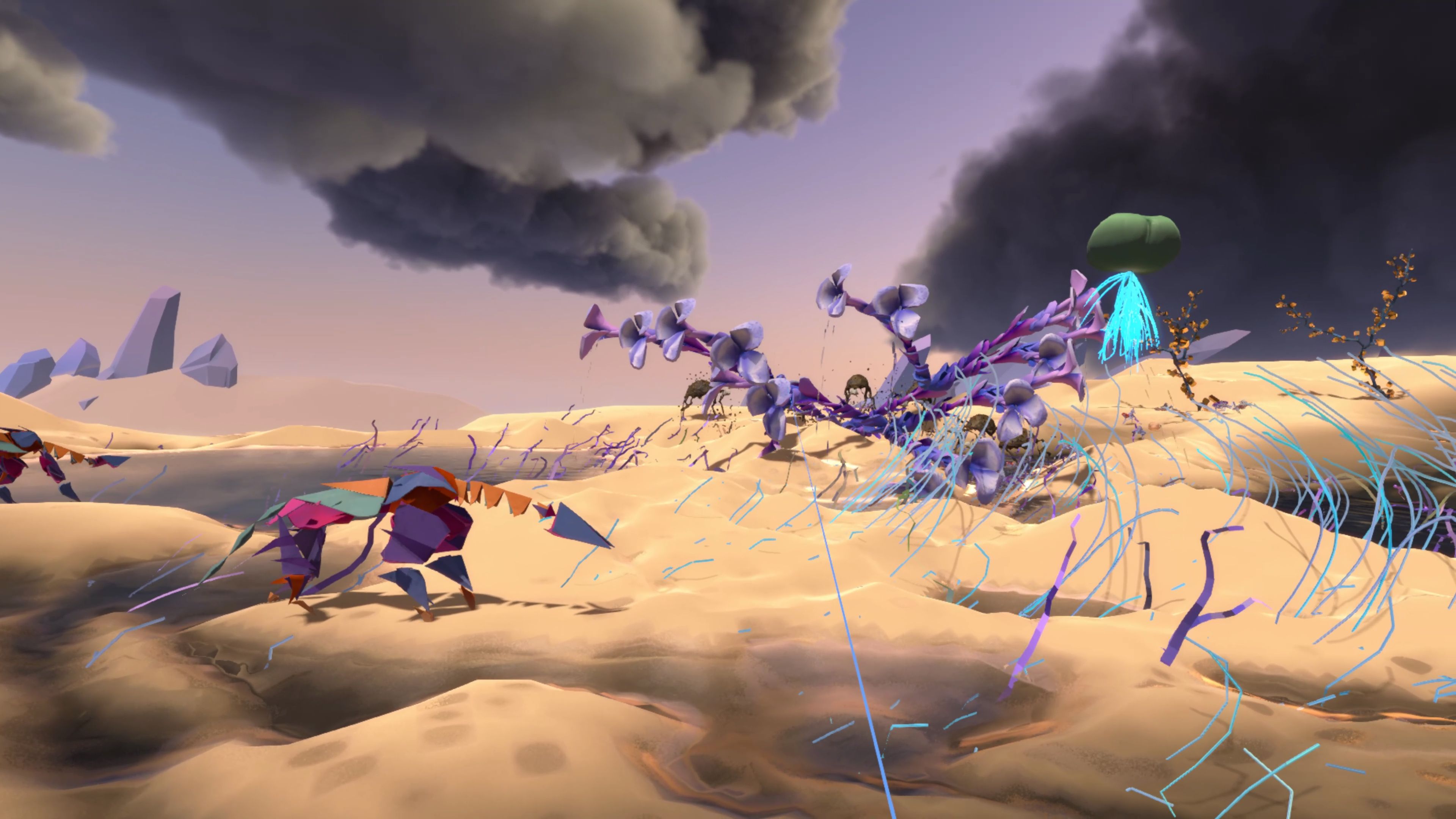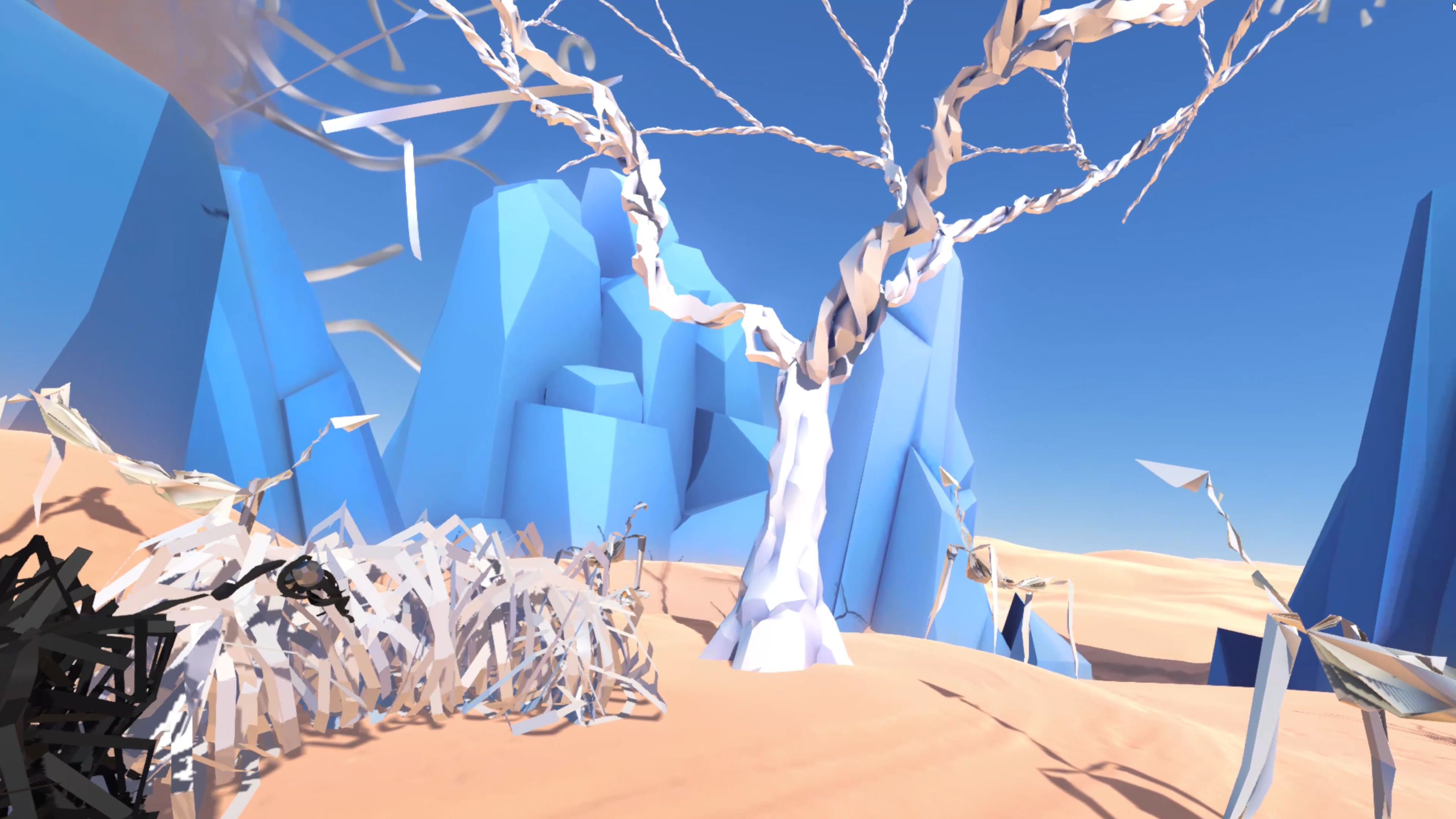Our Verdict
Paper Beast's origami animals delight, but the resulting game is less than the sum of its parts.
PC Gamer's got your back
What is it? VR puzzle game about guiding paper animals through a hostile wilderness.
Expect to Pay $20/£15.49
Developer Pixel Reef
Publisher Pixel Reef/Plug in Digital
Reviewed on AMD Ryzen 3600, Nvidia RTX 2080 Super, 16 GB RAM, Oculus Quest with link-compatible cable.
Multiplayer? No
Link Official site
Part puzzle game, part god game, all extremely weird, Paper Beast is unlike anything I've played before. A dedicated VR experience, it puts you at the centre of a unique wildlife simulation where the animals are not flesh and fur, but origami creatures roaming a harsh desert world. It's a fascinating and surprisingly emotional experience, albeit one that only scratches the surface of its potential.
Paper Beast is broken up into two distinct halves, starting with its story mode. The precise nature of that story is open to interpretation, but your fundamental role in the game is that of a fickle deity, acting varyingly as a helping hand and an agent of chaos to the animals roaming its world. The game's eight chapters are divided into several individual scenes, each of which comprises a small puzzle about moving the game's critters from A to B.
And what critters they are. The beasts of Paper Beasts are marvels of VR design. One of your earliest encounters is with a shaggy, porcupine-like animal with plumes of paper streamers flowing from its back. Watching this scruffy paper blob snuffle and shuffle past you at waist-height is delightful, like encountering a friendly dog on an evening stroll. Later on, you'll meet horse-like creatures called Papyvoruses that love to snack on screwed up bits of paper, strange crustaceans that obsessively roll up sand into balls like dung-beetles, and even a towering cardboard elephant. The varying shapes and sizes of these animals makes for an impressive showcase of VR's unique scale and depth.

Yet there's more to these creatures than their arresting look. Each beast has its own set of behaviours you'll need to learn to solve the game's puzzles. With the Papyvoruses (Papyvori?), for example, you can pick up their favourite snack and use it to lure them to different locations. You might to do this to help them avoid predators, or to guide them through a network of caverns where their fragile bodies are protected from the wind. Puzzles often combine these behaviours with the added ability to manipulate the terrain around you. You can pick up the sand-balls formed by the crab creatures and toss them onto the ground, creating sand pathways other animals can use to navigate across water or up slippery slopes.
What results is a sequence of dynamic environmental conundrums. The solution is always fixed, but the way you can manipulate both the animals and the terrain is not. You're constantly pushing and pulling the world around you to suit your needs. Working with AI animals does have its downsides, however. They'll often require encouragement to get them to the right spot, while Paper Beast's controls are unusually imprecise for a VR game, meaning that your solutions are rarely perfect.
Narrative-wise, Paper Beast is as strange as Death Stranding, although unlike Kojima's delivery-sim, Paper Beast doesn't exhaustively explain absolutely everything that happens. Quite the opposite. During your time with Paper Beast, you'll encounter a spectacular animal parade, float a giant radio over a glacial crevasse filled with sticky tendrils that latch onto anything nearby, and ride a hot-air-balloon that grows out of a tree. None of this is given any explicit reason or context. At one point it starts raining inky letters from the sky, a torrential alphabet that stains the ground black and threatens to drown the papery creatures caught beneath it. After a while it stops, and you move on. It's as bizarre as it is captivating.

While Paper Beast is (ironically) reluctant to spell out its message, the mood of each scene is always clear. Paper Beast is a largely chill experience, but its tone ranges from celebration to melancholy and even tragedy. Watching Papyvoruses struggle against the game's powerful winds, only to inevitably fold and be tossed into the air like sad animal kites, is undeniably moving. One especially unsettling puzzle involves connecting Papyvoruses to scuttling turtle-like creatures called "Densities" that can withstand the game's virtual gales. But the densities are slow, lumbering creatures. To encourage them to speed up, you can toss their young down a mountain slope, resulting in the parents throwing themselves after them. They don't get hurt, mercifully, but that didn't stop me from feeling like a baby-yeeting bastard.
Keep up to date with the most important stories and the best deals, as picked by the PC Gamer team.
Paper Beast's story mode is littered with memorable moments, but I always felt constrained by the physical limits of its vignettes. It takes a long time to spool up mechanically, and it ends just as you're getting to grips with it. Fortunately, Paper Beast is also packaged with a literal sandbox mode that lets you turn a desert wilderness into your own virtual wildlife preserve. You can fill lake beds and dried-up rivers with water, place plants and animals, and even conjure rainstorms. Particularly striking is the zoom system. Pushing the touch controllers toward one another lets you grow to god-like size, able oversee the entire map and sculpt it like a landscape gardener.

The sandbox mode demonstrates how deep Paper Beast's simulation runs. Plants propagate naturally, while animals exist in a clear food-chain with prey, predators, and apex predators all intermingling. It's fantastic to watch in motion, but it's also fairly pointless, resembling a prototype for a fantastic god-game that for some reason didn't quite work out and so was made into an optional mode.
This is my main issue with Paper Beast—it feels like two halves of a game that should be one cohesive whole. The game is directed by Eric Chahi, whose other credits include Another World and Heart of Darkness. The game it reminds me most of, however, is Chahi's From Dust. Like From Dust, Paper Beast is visually spectacular and systemically clever, but it struggles with the intersection between dynamic god-game and more prescribed puzzler. Whereas From Dust tried to reconcile these two sides of its personality in a single experience, Paper Beast splits them apart. Both sides work in their limited contexts, but they each feel like a tantalising taste of a grander experience that ultimately never transpires.
Paper Beast's origami animals delight, but the resulting game is less than the sum of its parts.
Rick has been fascinated by PC gaming since he was seven years old, when he used to sneak into his dad's home office for covert sessions of Doom. He grew up on a diet of similarly unsuitable games, with favourites including Quake, Thief, Half-Life and Deus Ex. Between 2013 and 2022, Rick was games editor of Custom PC magazine and associated website bit-tech.net. But he's always kept one foot in freelance games journalism, writing for publications like Edge, Eurogamer, the Guardian and, naturally, PC Gamer. While he'll play anything that can be controlled with a keyboard and mouse, he has a particular passion for first-person shooters and immersive sims.


